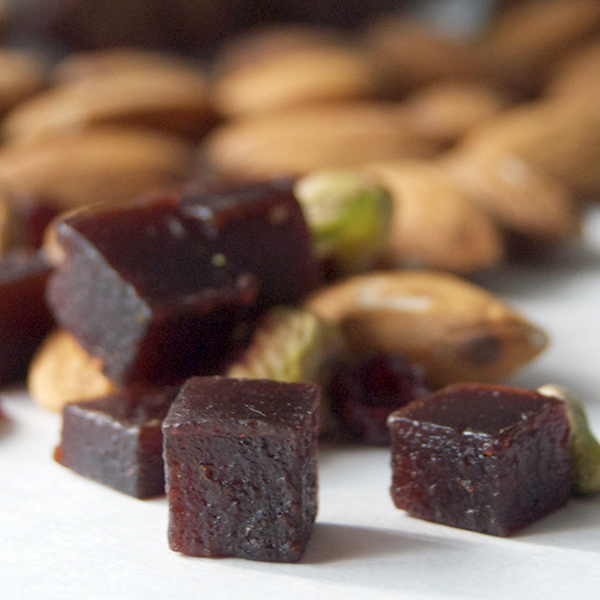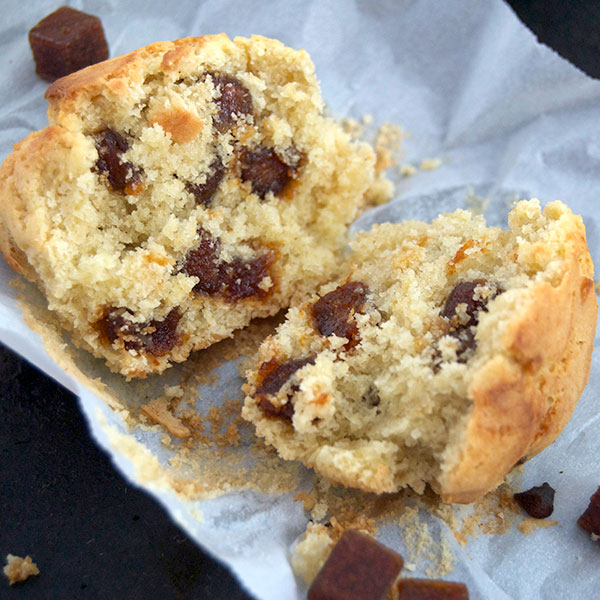
Organically Africa’s Organic Baobab Superfruit Bites are the results of years of baobab research and development to create an innovative fruit bite that provides high levels of antioxidants and fiber in a delicious fruit morsel that can be incorporated into a wide range of food products.

Baobab Research Created Our Innovative Baobab Superfruit Bites
Targeted at food manufacturers and private label brands seeking to bring new innovation, functionality and flavors to their products, Baobab Superfruit Bites are deliciously chewy fruit morsels that can be easily integrated into a wide variety of food products including cereals and granolas, fruit & nut mixes, nutrition bars, baking products, ice creams, used as stand-alone fruit snacks, or as a base for panned chocolate or yogurt coatings.
Through years of baobab research, we have developed our Baobab Superfruit Bites to be a truly unique way to add natural antioxidants and a flavor punch to a variety of food products. And with our ability to subtly adjust the water activity, flavors and other nutritional ingredients, we can completely customize each order of Baobab Superfruit Bites to suit multiple food applications and sectors, including frozen and bakery.
They come in a variety of flavors including Pomegranate, Blueberry, Raspberry, Strawberry, Blood Orange, Tart Cherry, Meyer Lemon, even Sweet Potato, and in innovative flavor combinations such as Peach Mango, Coconut Peach Mango and Carrot Mango.


We are always innovating our Baobab Superfruit Bites:
- We can adjust the moisture content and water activity depending on how you want to use them. Lower moisture for healthy snacking, intermediate moisture for bakery.
- We can coat with prebiotics or fortify with vitamins and minerals.
- We can change the sizes to suit the application: larger for enrobing, smaller for seed clusters.
- We are constantly developing new flavor combinations. Customized flavors including innovative vegetable combinations are available to customers based their individual branding requirements.
Published Baobab Research
Baobab Fruit is “a source of soluble fibers with PREBIOTIC-LIKE activity”
Manfredini S. (2002) The Health Properties of Baobab (Adansonia Digitata), University of Ferrara.
“The baobab fruit is a rich source of bioaccessible polyphenols, and the current study shows the potential of baobab for reducing the glycemic response to carbohydrate-rich foods both in vitro and in vivo”.
SA Coe et al. “The polyphenol-rich baobab fruit reduces starch digestion and glycemic response in humans”. Nutrition Research. 2013 Nov; 33[11]:888-96
“The seed and fruit pulp are excellent sources of potassium, calcium and magnesium … the high calcium content makes the baobab fruit attractive as a natural source of calcium supplementation for pregnant and lactating women as well as for children and the elderly.”
Osman. Chemical and Nutrient Analysis of Baobab (Adansonia digitata). Fruit and Seed Protein Solubility. Plant Foods for Human Nutrition (2004) 59: 29-33.
“The baobab’s anti-oxidant and anti-inflammatory properties make it valuable for a variety of applications in beverages, it has also proven to be an effective prebiotic ingredient.”
Gruenwald. Novel Botanical Ingredients for Beverages. Clinics in Dermatology (2009) 27: 210-216
“The integral antioxidant capacity of baobab fruit pulp was more than ten times higher than that of orange pulp.”
Vertuani et al. Antioxidant Capacity of Adansonia digitata Fruit Pulp and Leaves. Acta Phytotherapeutica (2002) 2: 86-90.
“It is very high in Vitamin C, up to 5000 parts per million.”
Sidibe et al. More on Baobab’s Homegrown Vitamin C. Agroforestry Today. (1998) 10 (4): 7-9.
“The flesh of baobab constitutes an excellent source of Vitamin C and a good source also of calcium and thiamin.”
Wehemeyer. The Nutrient Composition of Some Edible Wild Fruits Found in the Transvaal. S.A. Medical Journal. (1966). 104: 1102
Diarra B (2006) Book review, Baobab – Adanonia digitata, M. Sidibe ́, J.T. Williams, International Centre for Underutilized Crops, University of Southampton, Southampton, UK, 2002. Agricultural Systems 89, 478-481.
Obizoba IC & Anyika JU (1994) Nutritive value of baobab milk (gubdi) and mixtures of baobab (Adansonia digitata L.) and hungry rice, acha (Digitaria exilis) flours. Plants Foods Hum Nutr 46, 157-165.
Nour AA, Magboul BI & Kheiri NH (1980) Chemical composition of baobab fruit (Adansonia digitata L). Trop Sci 22, 383-388.
Gebauer J, El-Siddig K & Ebert G (2002) Baobab (Adansonia digitata): a Review on a Multipurpose Tree with Promising Future in the Sudan. Gartenbauwissenschaft 67, 155- 160.
Odetokun SM (1996) The nutritive value of Baobab fruit (Adansonia digitata). Riv Ital Sost Grasse 73, 371-373.
Let’s Talk About Baobab Research
We are always researching new ways to incorporate Baobab Fruit Powder, Baobab Superfruit Bites, Baobab Oil, Grape Seed Oil and Grape Seed Powder into new and exciting food, beauty and health products.
Contact us and let’s discuss how we can help you incorporate these ingredients into your next food product.
